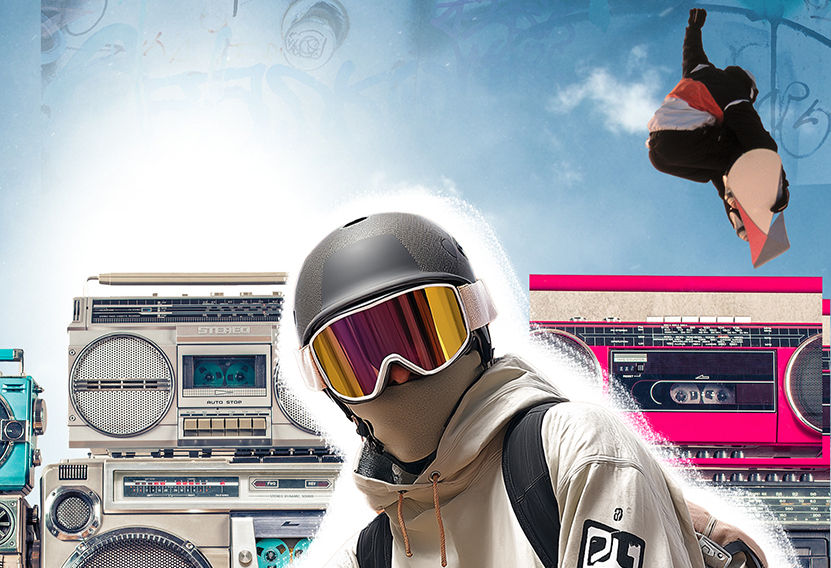Ski and snowboarding Helmet Safety Standards Explained (Without the Boring Bits)
- jeff1873
- Jul 28
- 3 min read

Whether you're a seasoned pro or taking your first wobbly trip down the bunny hill you need to protect your brain! Understanding Ski and snowboarding Helmet Safety Standards is essential. When it comes to buying a ski/snowboarding helmet, the alphabet soup of safety standards (ASTM, CE, EN… huh?) can leave you scratching your head.
Don’t worry—we’re breaking it down without boring you to death. Let’s go!
🧠 Why Helmet Standards Matter (A Quick Reality Check)
Skiing and Snowboarding is awesome, but it’s also a sport where you’re flying down a mountain surrounded by trees, ice, and other humans who may or may not know what they’re doing.
A certified helmet helps ensure your noggin is protected in case things go sideways... literally.
✅ Meet the Helmet Safety Standards
Let’s decode the most common safety standards you'll see when shopping:
1. ASTM F2040 — The American Favorite
What it is: This is the U.S. gold standard for snow sports helmets. Why it matters? It tests impact resistance, strap strength, and how well the helmet stays on during a crash. Look for it if you're buying in the U.S. or want a helmet that's been tested for serious falls at high speeds.
📌 Fun fact: If a helmet says “ASTM F2040 certified,” it means it passed crash test dummy like tests- i.e. simulated head impacts.
2. CE EN1077 — Europe’s Stamp of Approval
The European standard for ski and snowboard helmets.Two levels:
Class A: Protects more of your head (including ears and sides), built for high-speed riding.
Class B: More ventilation, but less coverage.
Look for it if you're shopping in Europe or want a helmet with lighter coverage for park riding or warmer days.
🧊 Pro tip: Serious helmets carry both ASTM and CE certifications—double win!
3. Snell RS-98 — The Ultra Tough One
What it is: A tougher, less common certification for snow sports.Why it matters: Snell standards go above and beyond most others.Look for it if: You’re riding aggressive terrain or want elite-level protection.
👀 Note: Not many snow helmets have this—it’s more of a bonus than a must-have.
⚙️ Other Tech That Boosts Safety
Certifications are great, but what’s inside matters too. Look for helmets with:
🌀 MIPS (Multi-directional Impact Protection System)
A low-friction layer that lets the helmet rotate slightly on impact—reducing rotational brain injury. Downside- at high speeds you may notice a slight "wobble".
ERT (Energy Reduction Technology)
My personal fav- incorporates soft advanced polymer pads into helmet designs to help manage both rotational and linear impact energy. It also protects against low AND high level impact. So even if you fall straight back getting off the lift, you're protected.
🧱 In-Mold Construction
This fuses the outer shell and inner foam, making the helmet lighter and stronger.
🧠 WaveCel or Koroyd
Newer technologies that absorb energy differently than traditional foam.
👶 Are All Helmets Safe If They're Certified?
Short answer: Yes—but not forever. Even a certified helmet should be replaced after a crash or every 3-5 seasons, because materials degrade over time (UV light, sweat, cold, etc.).
If your helmet has cracks, smells like a hockey bag, or is older than your snowboard—it’s probably time for an upgrade.
🏁 Bottom Line: What Should YOU Look For?
Here's your easy helmet-buying cheat sheet:
✅ Look for ASTM F2040 or CE EN1077 certification
✅ Consider ERT, MIPS or similar impact tech
✅ Make sure it fits snug, doesn’t wobble, and feels comfy
✅ Replace it after a big hit—or every few years
✅ Bonus: Look for features like audio compatibility and ventilation.
✅ MAKE SURE IT WORKS WITH YOUR GOGGLES- otherwise you will have gaps which will fog up your lens.
🎉 Ride Smart, Shred Hard
Buying a snowboarding helmet isn’t just about style (though hey, you do want to look good). It’s about protecting the one thing that makes all the fun possible—your brain.
So now that you're an expert on snowboarding helmet safety standards, grab a certified lid, hit the slopes, and ride with confidence!
Have questions about helmet features or tech? Drop them in the comments—let’s geek out together.
Happy Shredding!





Comments